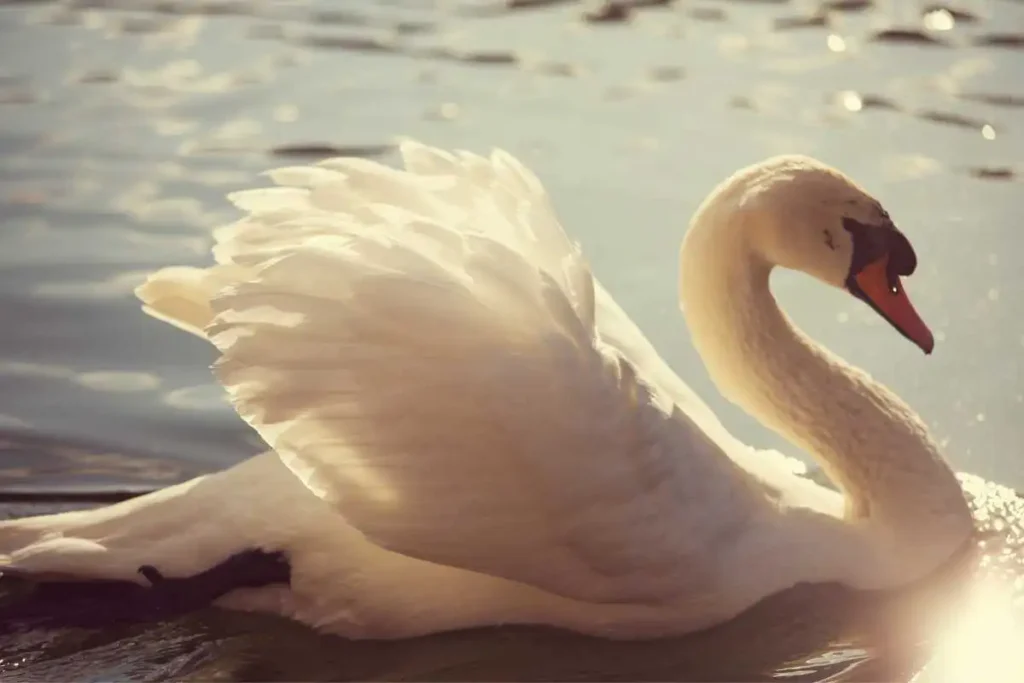Swans are magnificent birds known for their beauty, grace, and longevity. In this article, we’ll delve into the factors that affect the swan lifespan, explore the average age they reach in the wild and captivity, and highlight key species like the Mute Swan, Trumpeter Swan, and Tundra Swan. Understanding their lifespan offers insight into their behavior, survival strategies, and conservation efforts.

Table of Contents
1. Average Swan Lifespan in the Wild
Swans generally have long lifespans compared to other birds. In the wild, they can live between 10 to 20 years, depending on the species and environmental conditions. However, life in the wild is challenging due to predators, habitat destruction, and other natural risks.
For instance:
- Mute Swans typically live 10 to 15 years in the wild.
- Trumpeter Swans are known to live up to 20 years in favorable conditions.
- Tundra Swans, given their migratory lifestyle, often reach 10 to 14 years in the wild.
While these lifespans are typical, some swans have been recorded living much longer under exceptional conditions.
2. Swan Lifespan in Captivity

Swans living in captivity, such as in wildlife reserves or zoos, tend to live longer because they are protected from many of the dangers present in the wild. In captivity, swans can live up to 30 years or more, especially when given proper care and a stable environment.
For example:
- Mute Swans have been documented living up to 30 years in captivity.
- Trumpeter Swans may live well beyond 20 years when under human care.
- Tundra Swans can also live longer in captivity, often exceeding their wild lifespan.
3. Key Factors Influencing Swan Lifespan
Several factors play a significant role in how long a swan can live, both in the wild and captivity:
- Predators: Foxes, large birds of prey, and even humans pose significant threats to swans, especially to their young or eggs.
- Environmental Conditions: Harsh winters, habitat loss, and pollution can severely impact swan populations. Swans depend on wetlands, lakes, and rivers for survival, and degradation of these environments reduces their lifespan.
- Human Impact: While conservation efforts protect some swan populations, human activities such as hunting, habitat destruction, and pollution contribute to their shortened lifespan in the wild.
- Diet and Nutrition: A healthy, well-balanced diet contributes to a longer life. Swans in captivity often benefit from stable food sources, which can prolong their lives.
4. Swan Species: A Closer Look at Longevity

Each species of swan has its unique life expectancy based on their environment and lifestyle. Let’s examine the lifespan of some of the most notable swan species:
- Mute Swan (Cygnus olor): Native to parts of Europe and Asia, Mute Swans are one of the most recognized species. Their lifespan ranges from 10 to 20 years in the wild, but they can live longer in captivity.
- Trumpeter Swan (Cygnus buccinator): Known for its striking appearance and deep trumpet-like call, the Trumpeter Swan has one of the longest lifespans, with individuals often reaching 20 to 30 years in captivity.
- Tundra Swan (Cygnus columbianus): This migratory species spends its summers in the Arctic tundra. Due to the challenges of migration and habitat, Tundra Swans typically live up to 10 to 14 years in the wild but can live longer when cared for in captivity.
5. The Remarkable Longevity of Swans
Swans are a symbol of longevity, elegance, and survival in nature. While the Swan lifespan can vary depending on the species and environment, it is clear that swans are built to live long, productive lives. Their average lifespan of 10 to 20 years in the wild is impressive, especially given the threats they face. In captivity, they can live up to 30 years, showcasing the difference a safe and nurturing environment can make.
Whether you’re a birdwatcher or a conservation enthusiast, understanding the longevity of these beautiful birds provides a deeper appreciation for their role in ecosystems worldwide.

